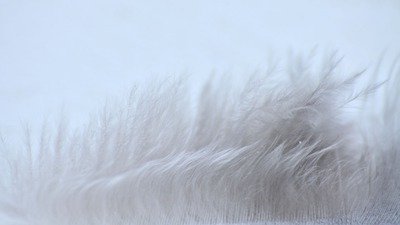
“Feathered Dinosaur”
“The fossil find of the century—the first dinosaur with feathers, a possible fore-runner to flying birds—has reportedly been discovered in China.” We need to wait and see the scientific paper.
The Sydney Morning Herald (Australia), October 17, 1996, p. 3 reported:
“The fossil find of the century—the first dinosaur with feathers, a possible fore-runner to flying birds—has reportedly been discovered in China.”
“This fossil, found in Liaoning province, has been radiometrically dated to the early Cretaceous, allegedly 135 million years ago.”
We need to wait and see the scientific paper, if and when it is published. In particular, let's wait until the “feathers” are confirmed. Keep in mind the following points:
- How many other fossils have been sensationally called “fossils of the century”? Remember Piltdown Man (a hoax), Nebraska Man (a pig's tooth).
- The atheist Dr Alex Ritchie, a paleontologist at the Australian Museum and a fanatical anti-creationist, claims that “dinosaurs developed feathers for insulation and later evolved and refined them for flight purposes”. This is a vacuous statement; the “facts” that feathers are good for insulation and flight are asserted to “confirm” the “hypothesis” that they evolved to get that way.
- Dr Ritchie fails to explain “how” they could have evolved — scales are folds in skin; feathers are complex structures with a barb, barbules, and hooks. They also originate in a totally different way from follicles inside the skin. Their embryonic development is different, as well. There has been no report yet of a fossil showing scales turning into feathers or a leg turning into a wing.
- He also fails to realize that selection for heat insulation is quite different from selection for flight. The best insulators are downy feathers, which lack the special hooks which make flight feathers rigid. Also, flightless birds have very hair-like feathers. Thus, selection would work against the acquisition of hooks since imperfectly hooked feathers would be less efficient insulators without the compensation of being good for flying.
- This fossil cannot be an ancestor of birds, since Archaeopteryx, a true bird with fully formed flight feathers and a wishbone, is dated by evolutionists at 15 million years before this fossil.
- There are many dating methods which give an age for the whole earth far too young for evolutionary scenarios. (See John Morris, The Young Earth, and Young World Evidence).
In summary
- Consider the lack of transitional forms between feathers and scales
- Consider how much more complicated feathers are than scales
- Consider how the best heat-insulating feathers are downy ones which lack the hooks needed to make flight feathers
- Consider how Archeopteryx had fully developed flight feathers, yet is 15 million years older according to evolutionists
- And that feathers develop from follicles; scales develop from folds in the skin
Recommended Resources

Answers in Genesis is an apologetics ministry, dedicated to helping Christians defend their faith and proclaim the good news of Jesus Christ.
- Customer Service 800.778.3390
- © 2024 Answers in Genesis






